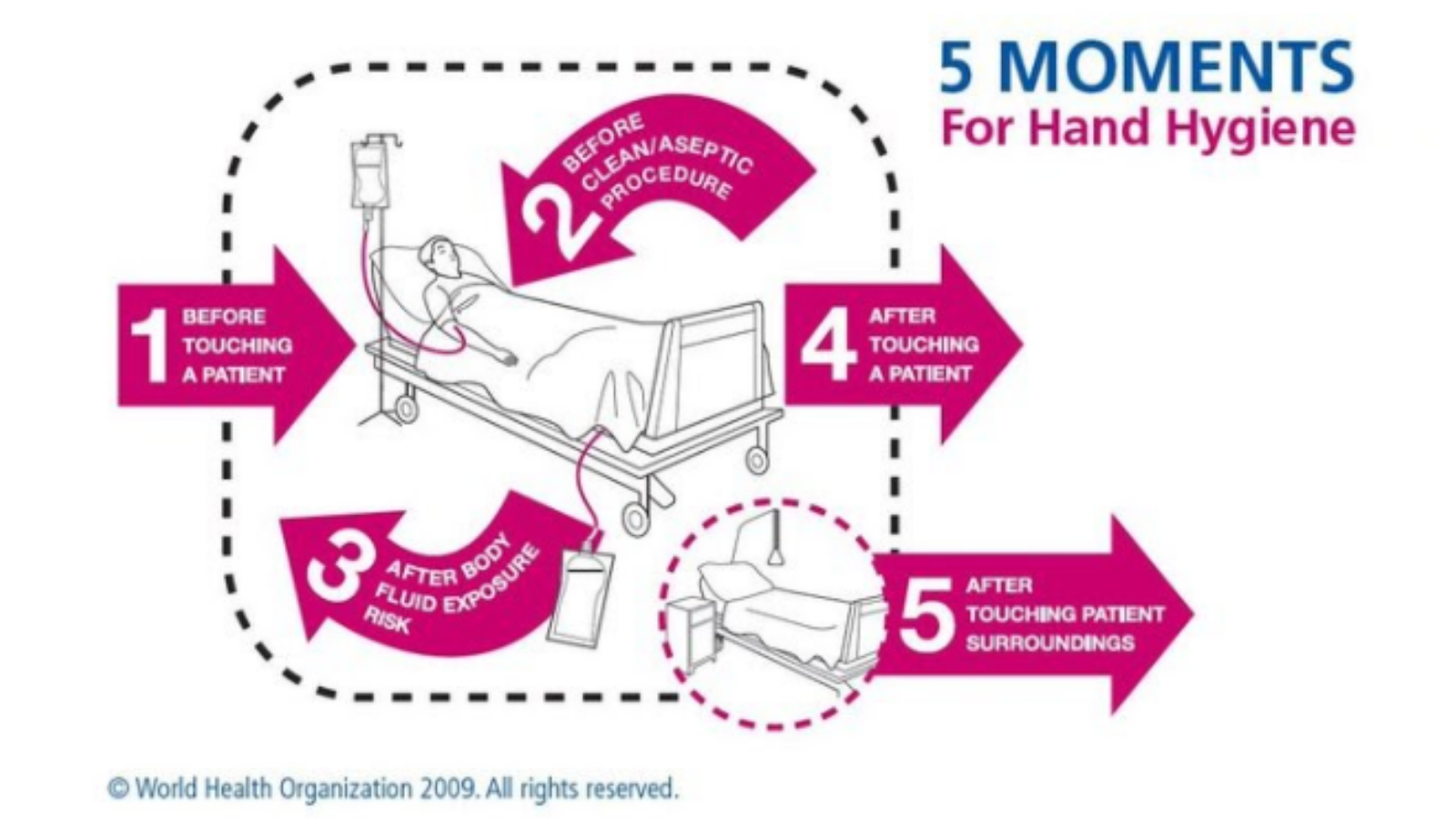Are you a health worker in search of the five moments of hand hygiene? Or have you ever wondered if your hand hygiene practices are truly effective in preventing the spread of infections? If so, you are in the right place.
Every one of us is associated with the health profession and performs its duties in daily lives. All the healthcare workers should be healthy so that they can serve the patients. For this, they need to follow the “5 Moments of Hand Hygiene”, that contain hygiene guidelines. Staff Nurses, doctors and other health workers should practice the steps provided by the World Health Organization. Right after handling the patients, they must ensure prevention of germs and infections. Similarly, before performing aseptic tasks, hand hygiene practices must be ensured. Do not worry, we will discuss all the key guidelines in this article.
Throughout this article, you will read all the valuable information relevant to the best practices for hand hygiene. These practices will ensure a cleaner environment for your working environment and foster safety as well. Remember to take a look at its importance at the second last section of this article.
What Is Hand Hygiene?
Hand hygiene means cleaning your hands to remove dirt, microorganisms, and other harmful substances. It is a basic part of personal hygiene. It plays a very important role in preventing the spread of infectious diseases. You can wash your hands with soup or with alcohol-based hand sanitizers as well.
The Five Moments Of Hand Hygiene
Patient safety and preventing the spread of infections are very important in healthcare settings. ‘The Five Moments of Hand Hygiene’ includes some important medically approved instructions to ensure hand hygiene.
From pre-procedural preparations to post-contact care, these are very important. Following these helps with infection control protocols and safeguards both patients and healthcare professionals. Let’s take a detailed look at them to understand and practice them.
Before Touching A Patient:
The first point among these five moments is before any contact with a patient. It means you must perform hand hygiene before touching any patient. This includes all kinds of situations, whether they involve direct physical contact with the patient or its surroundings. These may include administering medication, performing examinations, and providing assistance with daily activities.
Before A Procedure:
The second moment includes hand hygiene before starting any medical procedure. It is very important for everyone to thoroughly clean their hands before starting any medical procedure. It keeps the patient protected from harmful microorganisms and any other potential infections.
After A Procedure Or Body Fluid Exposure Risk:
The third one is usually known as after the procedure. It especially involves activities in which body fluids like blood or saliva are involved. All the procedures involving the manipulation of catheters, wound dressings, and other medical devices fall under this category. Handling contaminated materials is also part of it.
After Touching A Patient:
The fourth point among the five moments of hand hygiene is after touching the patient. It is usually after completing patient care tasks. You must thoroughly clean your hands before making any form of physical contact with a patient. It helps in preventing the pathogens from being transferred from one patient to another. Moreover, it also minimizes the risk of cross-contamination within healthcare settings.
After Touching A Patient’s Surroundings:
The last movement involves the patient’s surroundings. It is also as important as washing your hands after touching the patient. Be careful whenever you are around a patient’s surroundings. These include surfaces, equipment, objects, or anything in the patient’s vicinity that may contain infectious agents. By cleansing your hands after these interactions, you can maintain a clean and safe care environment.
Why Is Hand Hygiene So Important?
Hand hygiene cannot be neglected, especially in healthcare settings. It is to reduce the risk of transmitting infections. Here is why it is important:
- Preventing Healthcare-Associated Infections (HAIs): The first and most important reason to maintain proper hand hygiene among healthcare professionals is to reduce the risk of HAIs. It reduces the transmission of pathogens between patients, healthcare workers, and the environment.
- Protecting Vulnerable Populations: It is also essential to prevent the risk of infection in sensitive populations. These include patients with weakened immune systems, like the elderly, infants, or individuals with chronic illnesses.
- Curbing Antimicrobial Resistance: The overuse and misuse of antimicrobial agents have led to an increase in antimicrobial-resistant bacteria. It is a global threat to public health.
- Promoting Patient Safety: Hand hygiene is also necessary for patients’s safety. It adds confidence in patients and assures them that healthcare providers are taking necessary precautions. It prevents the spread of infections during their care.
- Demonstrating Professionalism: Last but not least, it is a sign of professionalism. Following the hand hygiene protocols shows the commitment to ethical healthcare practices. It reflects their dedication to increasing standards of care and prioritizing patient well-being.
Final Words
Understanding and following the “5 Moments of Hand Hygiene” outlined by the WHO is essential in all kinds of healthcare settings. These are very helpful in ensuring patient safety and preventing infections. These are very important for protecting vulnerable populations, antimicrobial resistance, and patients’s safety.
Moreover, these also demonstrate professionalism and will definitely help you progress in your field. It creates safer environments and increases the trust of patients. If you want to know anything else about hand hygiene or anything else about it, feel free to contact us.


